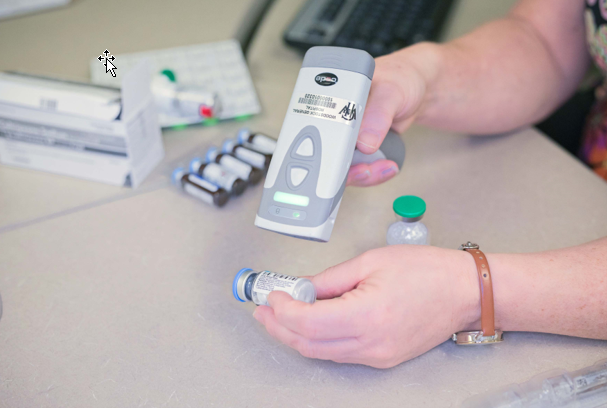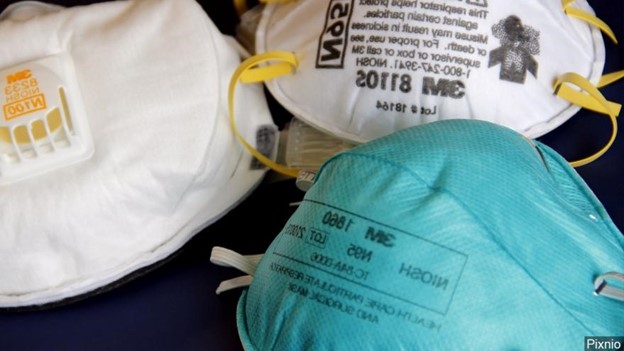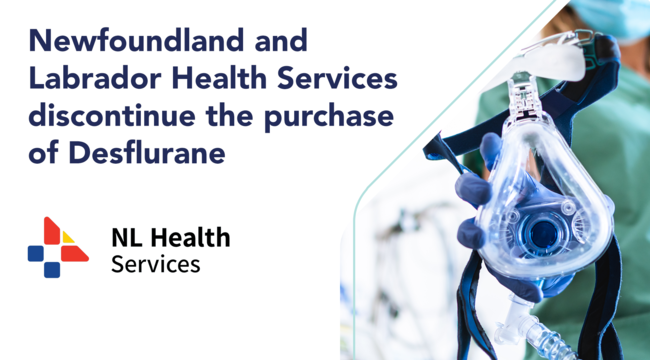HealthPRO Canada News
October 14, 2020
Industry Insights: Interview with Dr. Anne Snowdon
Many industries have improved safety by implementing supply chain best practices. SCAN Health, of which HealthPRO is a contributing partner, and Anne Snowdon are focused on bringing those strategies to healthcare in a way that reduces adverse events.
Anne Snowdon, BScN, MSc, PhD, FAAN is a professor, Strategy and Entrepreneurship, Academic Chair, World Health Innovation Network (WIN), Scientific Director & CEO, Supply Chain Advancement Network in Health (SCAN Health).
 In her research on the high rates of error in our health system, Dr. Snowdon decided to go down a different path – exploring why other industries don’t have this problem. After studying airlines, grocery stores and even Disney, she realized that supply chain could be the key to system improvements in healthcare. She created SCAN Health for that purpose and today it’s a network of global partners, all focused on developing supply chain tools to reduce adverse events in healthcare. Below, Anne reflects on SCAN’s evolution and the increased attention on its work during COVID-19.
In her research on the high rates of error in our health system, Dr. Snowdon decided to go down a different path – exploring why other industries don’t have this problem. After studying airlines, grocery stores and even Disney, she realized that supply chain could be the key to system improvements in healthcare. She created SCAN Health for that purpose and today it’s a network of global partners, all focused on developing supply chain tools to reduce adverse events in healthcare. Below, Anne reflects on SCAN’s evolution and the increased attention on its work during COVID-19.
Q: Please give us a glimpse into your role as Scientific Director and CEO of Supply Chain Advancement Network in Health.
We created it and designed it to fill a gap in knowledge dissemination in health system supply chains. The problem is we do all this work and research with stakeholders and partners, as I have been doing for 10 years, and yet knowledge dissemination doesn’t take place. Knowledge dissemination is really limited to publications and the odd conference presentation. So, this network was designed to engage all the key stakeholders across health systems including industry, governments, health leaders, clincians, patients and academia in order to share knowledge and expertise about how supply chain can be used in health systems to overcome this challenge.
Another big part of my role is finding new ways to engage key stakeholders and partners in this whole thing called supply chain in healthcare. Our team at SCAN Health looks for ways to leverage supply chain tools, technologies, approaches, and knowledge to solve health system challenges, the most significant of those in my view is medical error in health systems. It’s the third leading cause of death – and this has been going on for decades. We have great evidence on critical issues like error and the prevalence of error does not seem to change. The average time it takes for evidence to get into practice is anywhere from 17 to 25 years – a quarter of a century! The legacy and the silver lining of the pandemic is that it has shone a very bright light on why rapid knowledge dissemination actually matters – in this pandemic it makes the difference between health workers being infected or not being infected.
Q: What is the purpose/mission of the Supply Chain Advancement Network (SCAN) in Health?
It’s actually a funny story how I made the link between errors in healthcare and the supply chain. One day I was at the grocery store – watching the cashier scan all these barcodes across the barcode reader. Every time she scanned something the exact product name, size and price showed up on the screen. So, I thought, what would that look like in an operating room? Every product you happen to be using in a particular surgery gets scanned, so on your monitor you have a complete list of everything that's been opened or touched or used in a case. That led me on a search for what have other business sectors have figured out that healthcare needs to figure out. What became apparent fairly quickly, I would say, is supply chain. I even looked at Disney. Disney is so digitally connected, as a guest walks into a hotel front door they know you have walked in, where your room is, what rides you were on that day, and at what restaurants you had meals. All in the name of concierge services.

The sad story in healthcare is we still have a very manual system. We rely on clinicians, usually nurses and sometimes doctors, to ask a checklist of questions, to double check, is this the right patient's name and are they going to the right operating room? If you’re going to rely on human behaviour to double check things, you're always going to have a greater risk of errors. So that became the basis of a lot of the work we do at SCAN Health – bringing global partners together to understand how to mobilize supply chain knowledge and digital infrastructure in a way that leads to safer and higher performing healthcare environments.
Q: We understand that you are in the process of preparing provincial case studies on Supply Chain Infrastructure, policy frameworks and COVID-19 outcomes. What are some of the things you’re hoping to learn?
We have a team of 20 researchers and over 30 partners conducting a national study right now, funded by the Canadian Institutes of Health Research (CIHR). We’re interviewing all the key stakeholders and leaders in seven provinces to identify and map their supply chain processes, infrastructure, supply chain data, and the role this plays in pandemic responses. How do their health systems know what products they have or don’t have? Are they running out of N95 masks or any other products? From these case studies we hope to learn how supply chain processes are implemented, how decisions are made leveraging supply chain data, and what outcomes are being achieved.
We’re already three months into the study and we do know that of the seven participating provinces, only one has digital supply chain infrastructure that would inform leadership decisions and supply chain strategy.
Q: From your perspective, are there any stakeholders (within Canada or globally) who you felt fared particularly well during COVID-19 from a supply chain perspective? What were the contributing factors to their success and what can we learn from them?
I think it was nothing short of amazing that stakeholders in every province rallied and mobilized as well as they did. Everyone from the supply chain teams working 24/7 to find sources of supplies that were in critical shortages; health teams and law firms just trying to make sure that when products arrived, that quality products were real, were accounted for, and the payments were made. Clinician teams went right to the frontline, working with people with COVID-19, not always sure they had the right protective equipment.

I couldn’t identify one group who made it all work and happen but I haven’t come across anyone who didn’t have the best of intentions to make it work, realizing the incredible complexity they were facing.The scope and scale of this pandemic continues to be unprecedented, requiring a team approach where everyone plays an important role.
Q: You’ve been a long-time advocate of barcoding to improve the supply chain. Do you feel that standardized barcoding could have helped mitigate some of the impacts of COVID-19 on the supply chain? If so, how?
It was barcoding – in grocery stores and on planes – that first got me thinking about its potential to reduce errors in health system environments. Our work goes beyond barcoding – I would suggest it’s about tracking, traceability and transparency. What patients receive care, what care did they receive, by what care team, and what was the outcome? Did it offer any value? That is what supply chain can achieve. It’s creating the transparency around the care health systems are offering every individual patient, in order to understand what care is working best for whom, and under what conditions best outcomes are achieved.
The success or failure of our systems during the pandemic was entirely dependent on the strength of the digital infrastructure in their supply chain. Did they have the transparency to know what product they had on hand; what products do clinician teams need; where are products needed most; and what’s the burn rate of utilization so we know how quickly to replenish. Systems that had that transparency and the digital tools to know exactly what clinicians were using and how quickly did far better than systems that were largely manual and paper-based.
Our two biggest provinces – Quebec and Ontario – had no digital infrastructure at a provincial level. Other provinces did pretty well – Newfoundland already had an integrated system to some degree; they’ve connected all the different pieces of their system across the province. Alberta has a single province-wide digital infrastructure that is extremely sophisticated and very strong. They didn't have to invent anything; they just had to turn on the taps to create the transparency they needed.
Q: As we officially find ourselves in a second wave of COVID-19, is there anything you feel that governments, organizations or supply chains should be focused on to lessen the possible impacts?
No question, sourcing of product is top of mind. We still do not have a strong and solid source of N95 masks – the ability of our current capacity to scale up for the next wave is still questionable. You can’t magically put a digital infrastructure in place, but you can start to look at a more balanced geographic balance in your suppliers for the various products that are critical to delivering care safely– understanding and identifying what are the critical products we must find, create or find alternatives to.
Provinces have been incredibly creative and innovative – working with local businesses in their own jurisdictions and partnering with them to source products. There are a lot of great manufacturers and businesses with global reach that can get to those supply networks that health systems struggle to access.
COVID-19 still has many unknowns, but we are learning from difficult experiences such as long-term care. It’s a tough lesson to learn, but we should now be much better able to identify our highest risk population segments so we can proactively protect them from this next wave. What that does is actually protect the health system from that surge in demand for hospital beds that may or may not be able to be met if COVID-19 cases surge.
Q: I want to close by asking, what has been satisfying for you about doing this work with SCAN Health and where do you see yourself going forward with this work?
I’m inspired by the incredible partnerships we’ve formed. Our partners in SCAN Health number over 200 across nine countries and every one of them have devoted time and expertise whenever and wherever needed. Until we had SCAN Health, it was kind of a lonely world, trying to get people to understand the importance of supply chain infrastructure (pre-pandemic).
One of SCAN Health’s key projects was to create a maturity model, like a survey tool which analyzes and documents a health system’s capacity for digitally-enabled supply chain infrastructure. HIMSS, the Health Information Management Systems Society, launched that tool across their global network last fall and it’s already picking up a lot of speed and engagement. The transition has done what we had hoped to - take forward some of the tools, the opportunities for learning, and the collaboration and partnerships that are going to enable health systems to advance their digital health infrastructure and help them overcome so many of the challenges of this pandemic.
In some ways, the timing of the pandemic was interesting. SCAN Health had been in place for three years, suddenly there's a pandemic and people say hey, that network might be helpful! Nobody could've predicted that of course, so the future really is to build on the strategies to engage stakeholders we’ve developed, maintain the Design and Business Case competitions and make sure the network has a legacy. I’m so glad that’s happening!


